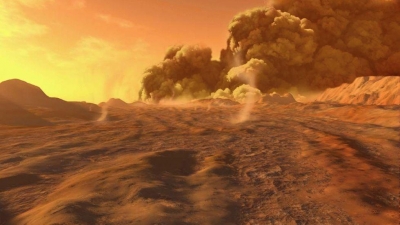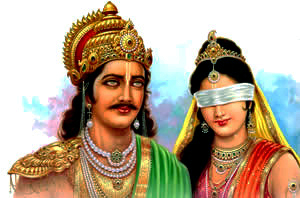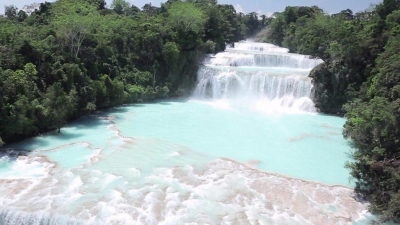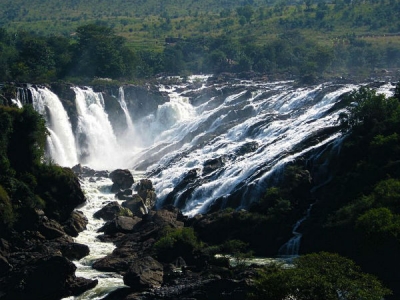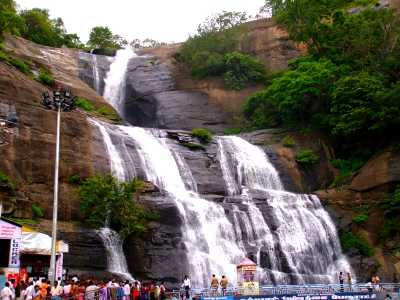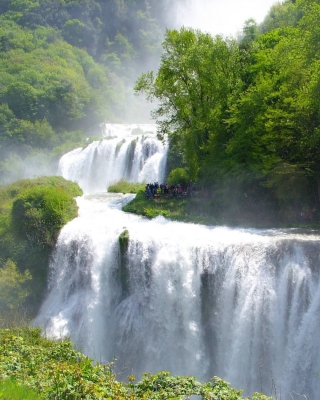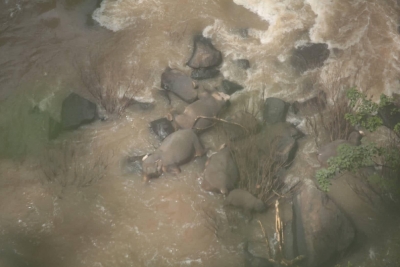
Mars is nicknamed the Red Planet because of its rusty soil. Like Earth, it has a rocky surface, polar ice caps, mountains, valleys, and clouds in the sky. However, the fourth planet from the Sun has a far more extreme environment than ours. It is very cold and dry with a thin unbreathable atmosphere.
Mars is approximately half the diameter of Earth, with a surface area only slightly less than the total area of Earth's dry land. Mars is less dense than Earth, having about 15% of Earth's volume and 11% of Earth's mass, resulting in about 38% of Earth's surface gravity. The red-orange appearance of the Martian surface is caused by iron(III) oxide, or rust. It can look like butterscotch; other common surface colors include golden, brown, tan, and greenish, depending on the minerals present.
Olympus Mons
Towering high above the Martian landscape is Olympus Mons. It is the largest volcano in our Solar System and nearly three times as high as Mount Everest! Olympus Mons is part of a complex of volcanoes that lie along a volcanic plateau called the Tharsis Bulge. This entire region lies over a hotspot, a place in the planet’s crust that allows magma from deep inside to flow out to the surface. While planetary scientists have not recorded a volcanic eruption on Mars in real time, there is evidence of geologically recent flows perhaps in the past few tens of millions of years. It is possible that Mars is not yet volcanically dead.
Valles Marineris
Valles Marineris is a 4,000 km (2500 mile) crack across the surface of Mars, at parts 7 km (4 miles) deep. It is a system of canyons, including the vast Coprates Chasma. The planet has a very primitive form of plate tectonics, and the action of two plates past each other began splitting the surface some 3.5 billion years ago. That set the stage for the formation of the Valles Marineris. At the same time, volcanic activity in the Tharsis region put pressure on the crust as molten lava pushed the region up from below. The combined tectonic activity further broke the crust into fractures and fault regions. In the valleys, the ground sank, and underground water escaped. That caused the ground to drop farther, and landslides and erosion continued to cut away and widen the valley systems. Today, the Vallis Marineris canyons show the marks of ancient floods and continued erosion by the Martian winds.
Picture Credit : Google
